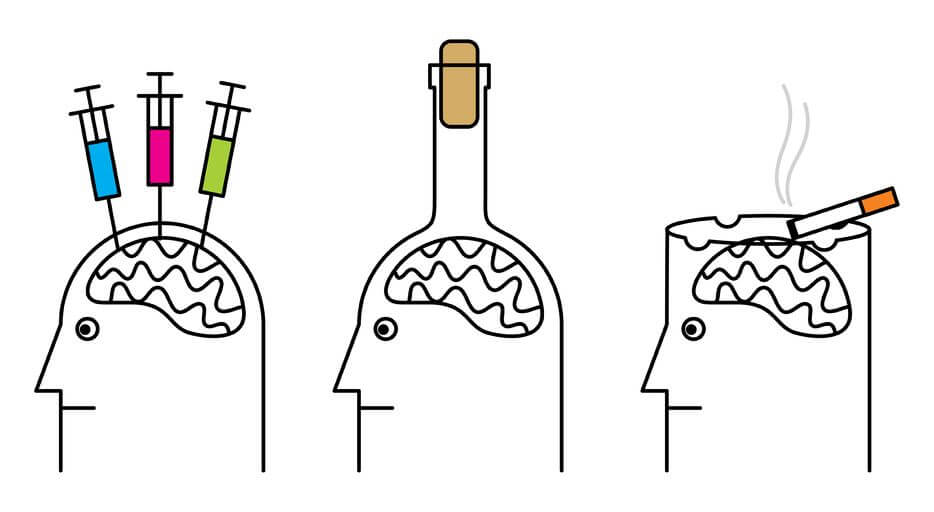Smoking History
Ask: Have you ever smoked? If yes –
Further ask:
- For how long?
- What form? (cigarettes, cigars, pipe, chewed)
- How much?
Quantify smoking history:
A ‘pack year’ is smoking 20 cigarettes a day (1 pack for one year)
(Number of cigarettes smoked per day X Number of years smoking)/20
Example: A smoker of 15 cigarettes a day who has smoked for 40 years would have smoked (15X40)/20 = 30 pack years
For those who use loose tobacco for smoking:
- Approximately 1/2 of an ounce of loose tobacco equals 20 commercial cigarettes.
- The following formula was then developed to gauge pack years for loose tobacco smokers, who usually speak of how much they smoke in terms of ounces per week:
- Ounces per week × 2/7 × number of years smoked = pack years
> 20 pack years = Risk for COPD and Ca. lung
If non-smoker: ask about passive smoking
Quantify smokeless tobacco:
Smokeless tobacco use can be quantified by finding what portion or how many packages of a particular product are used in a 24-hour period.
- Snuff is packaged in cans containing 30 to 40 grams of tobacco
- Chewing tobacco comes in 70- to 80- gram pouches containing square plugs or bricks.
Amount used may be described, for example, as a half can of snuff per day for 10 years or one pouch of tobacco per day for 10 years. This could also be recorded as 5 can years or 10 pouch years, similar to the pack years used for cigarette smoking. It is also important to find out the number of hours per day tobacco is kept in the mouth and if the juices are expectorated or swallowed.
Alcohol History
Ask: Do you ever drink any alcohol? If yes –
Further ask:
- What?
- When?
- How much?
- When did you las have a drink?
- What’s the most you ever drink?
Calculate units of alcohol:
1 unit of alcohol is equivalent to 8 gm (10 ml) of ethanol.
Number of units of alcohol = volume of alcohol (litres) X % alcohol by volume (ml/100 ml)
1 unit of alcohol =
- 1 small glass (125 ml) of wine (8%)
- 1 half-pint (250 ml) of beer (4%)
- 1 short (25 ml) of spirits (40%)
Example: If a patient drinks half a bottle of vodka (approximately 15 units) and 3 pints of beer (6-9 units depending upon strength) every day. His approximate weekly intake was 147-168 units.
Levels of drinking:
- Social drinking: Within recommended levels, i.e. not more than 3-4 units per day and 21 units per week for men and 2-3 units per day and 14 units per week for women
- At risk consumption: More than 21 units per week for men and 14 units per week for women
- Binge drinking: Drinking twice daily limits or more, i.e. 6 units for women and 8 for men
- Problem drinking: When alcohol causes problems for the drinker, the drinker’s friends and family or the society as a whole.
- Dependence and addiction
Screening Alcohol Problems
1. CAGE questionnaire (easy but not sensitive)
- Cut down: Have you ever felt you should cut down on your drinking?
- Annoyed: Have people annoyed you by criticising your drinking?
- Guilty: Have you ever felt bad or guilty about your drinking?
- Eye opener: Do you ever have a drink first thing in the morning to steady you or help a hangover?
2 or more positive answers suggest problem drinking.
2. FAST (FAST alcohol screening test) questionnaire (complex but sensitive)
Mnemonic: BARS
Score questions a, b and c – never (0), less than monthly (1), monthly (2), weekly (3), daily or almost daily (4)
Score quesion d – never (0), on one occassion (2), on more than one occassion (4)
a. Binge drinking: How often do oyu drink 8 units or more (male) and 6 units or more (female)?
b. Amnesia: How often during the last year have you been unable to remember what happened the night before because you had been drinking?
c. Role failure: How often during the last year have you failed to do what was normally expected of you because of drinking?
d. Suggestions: In the last year has a relative or friend, or a doctor or other health worker been concerned about your drinking or suggested you cut down?
If answer to “a” is Never, then the patient is probably not misuning alcohol.
If answer to “a” is Less than monthly or Monthly, move to question b, c and d.
- Score for hazardous drinking: 3 or more

Excellent presentation.I am a medical teacher in a medical college in Nepal.I find it extremely useful for undergraduate as well as postgraduate students to memorize the principles of medicine very easily.Typographical mistakes inadvertently have been crept in.That needs to be addressed in the future.
Thanks a lot.